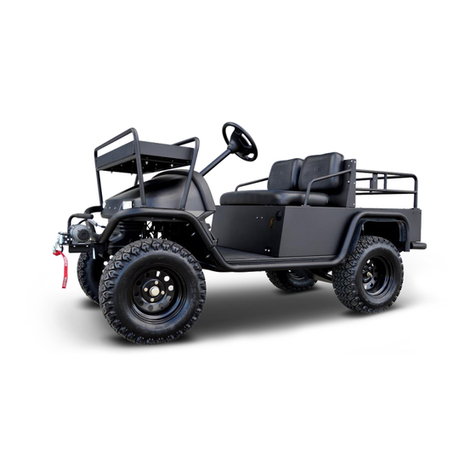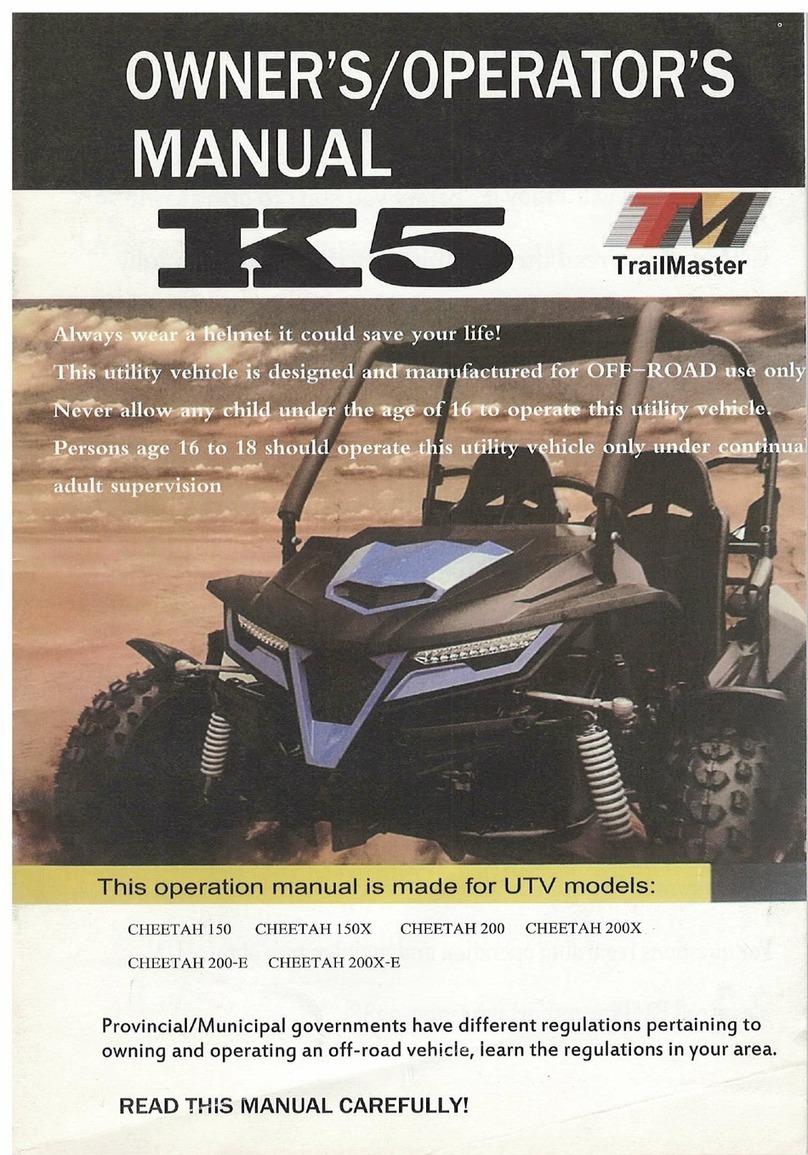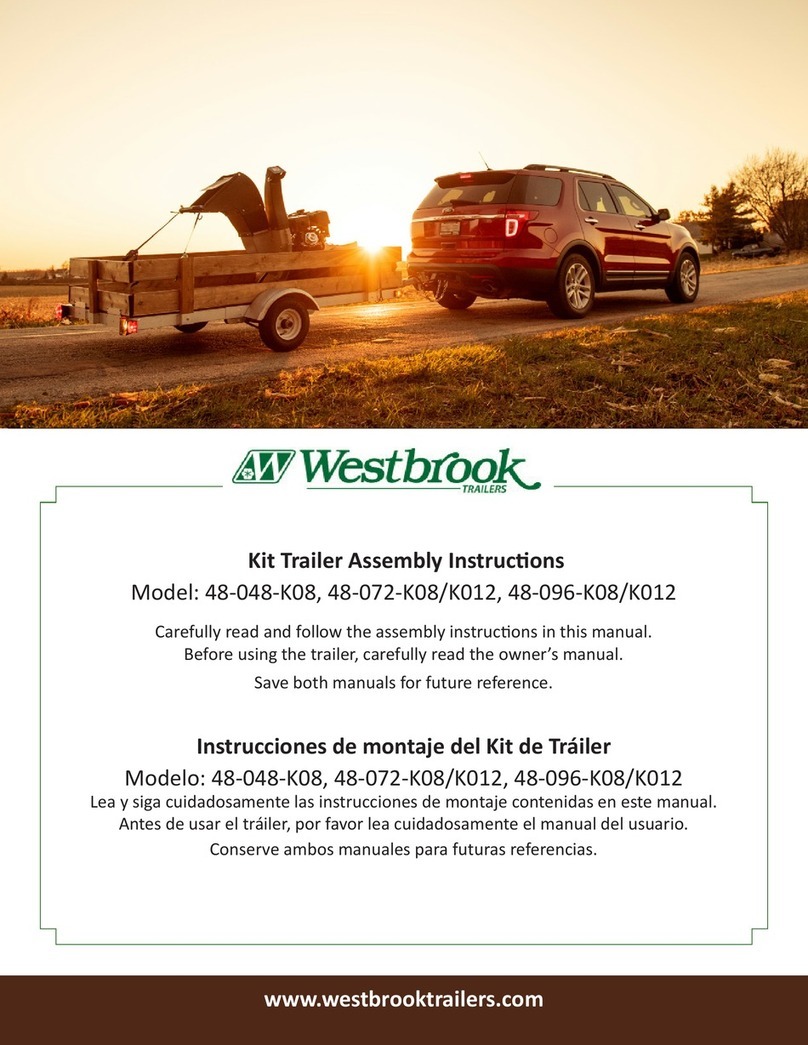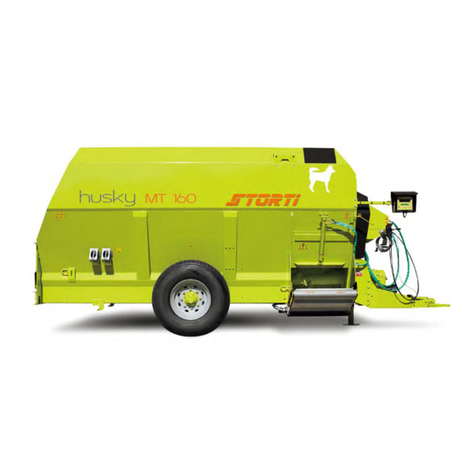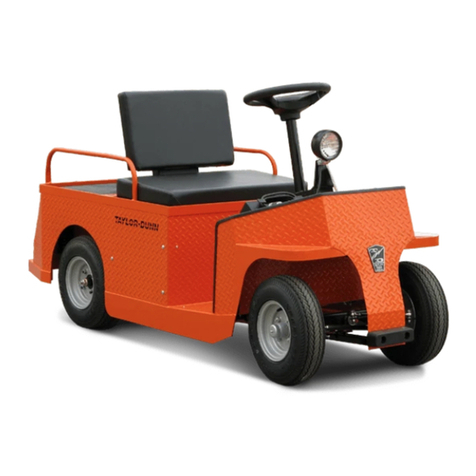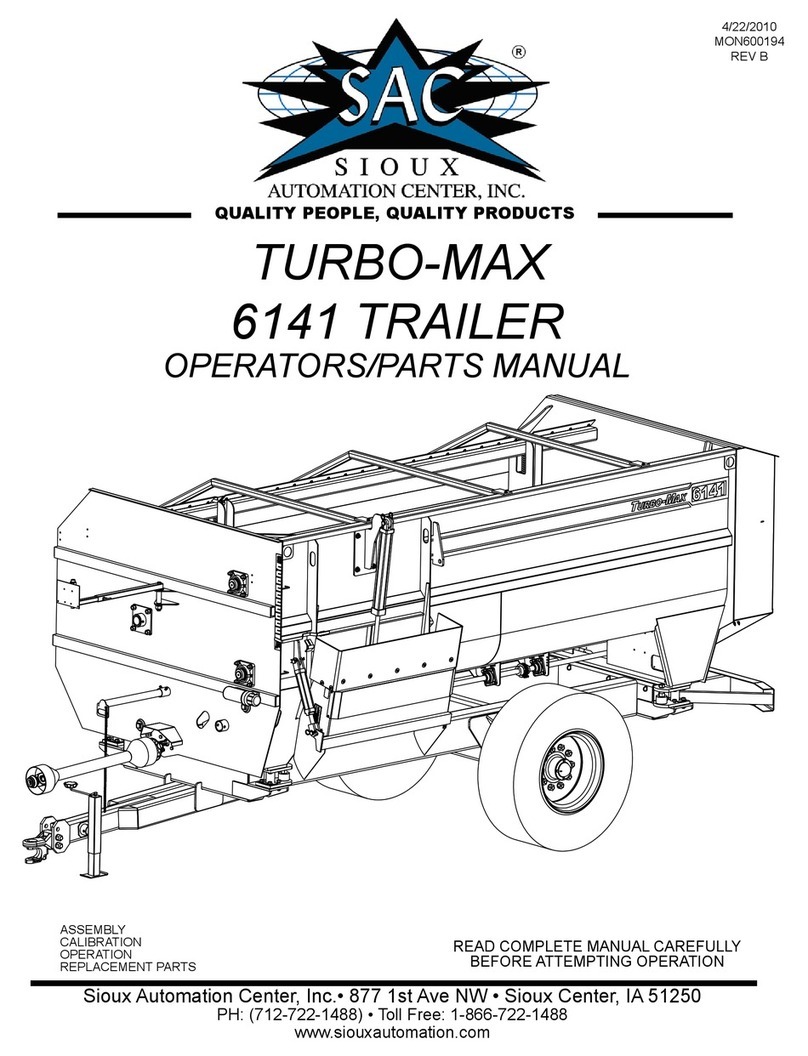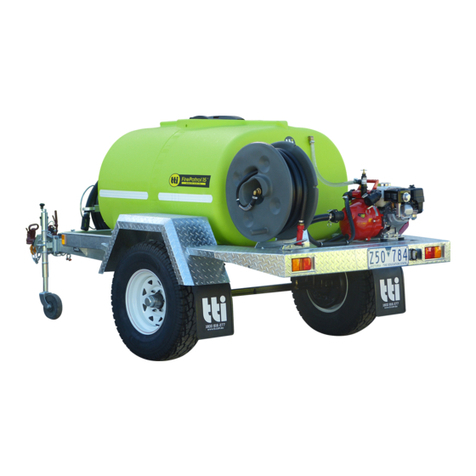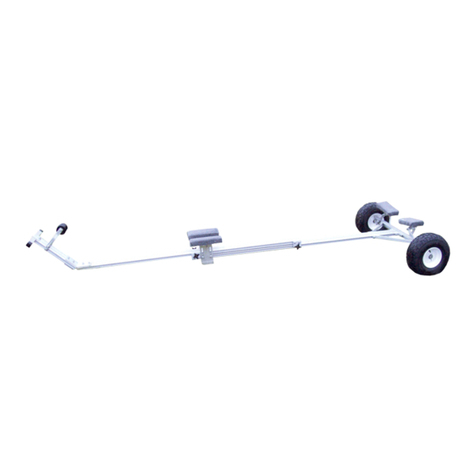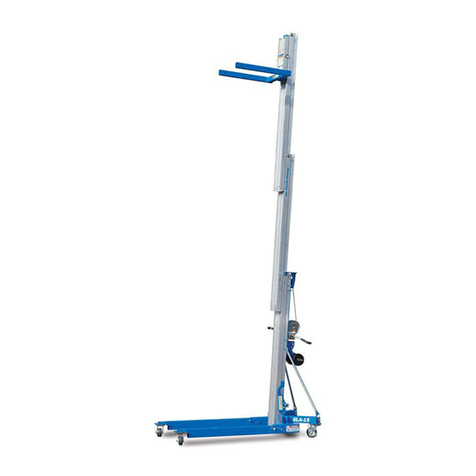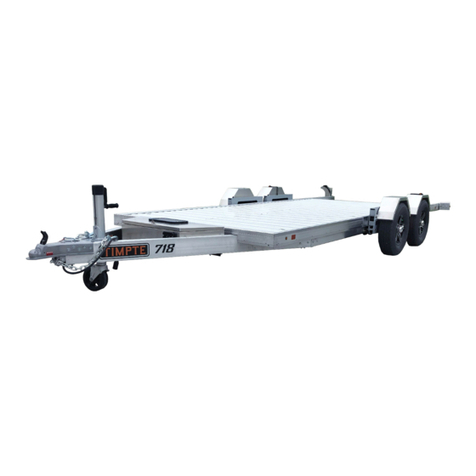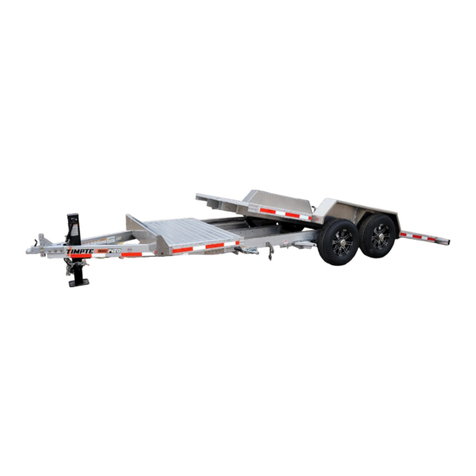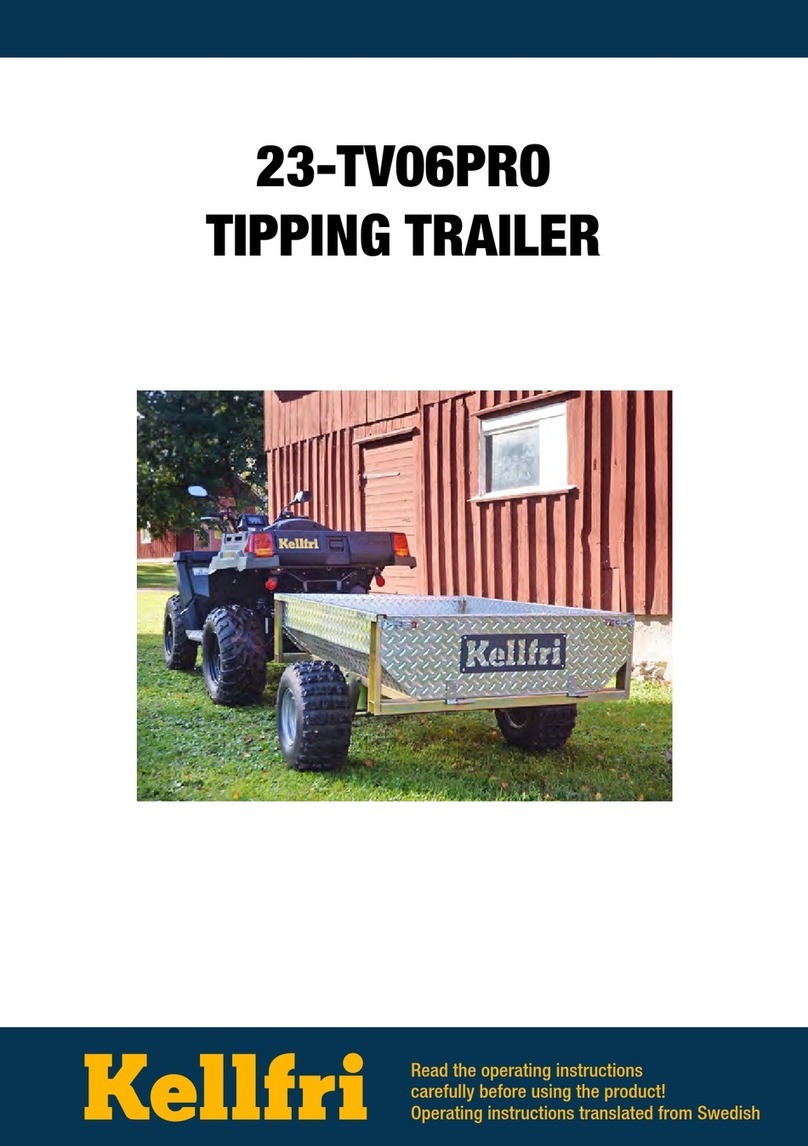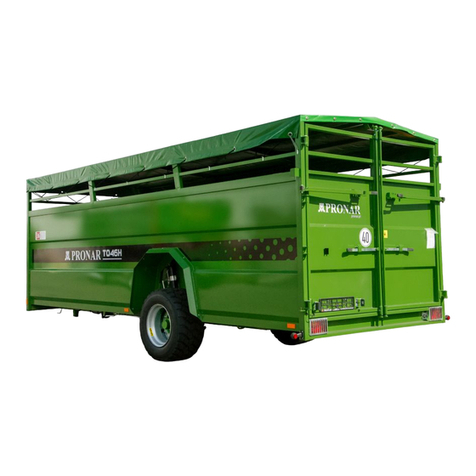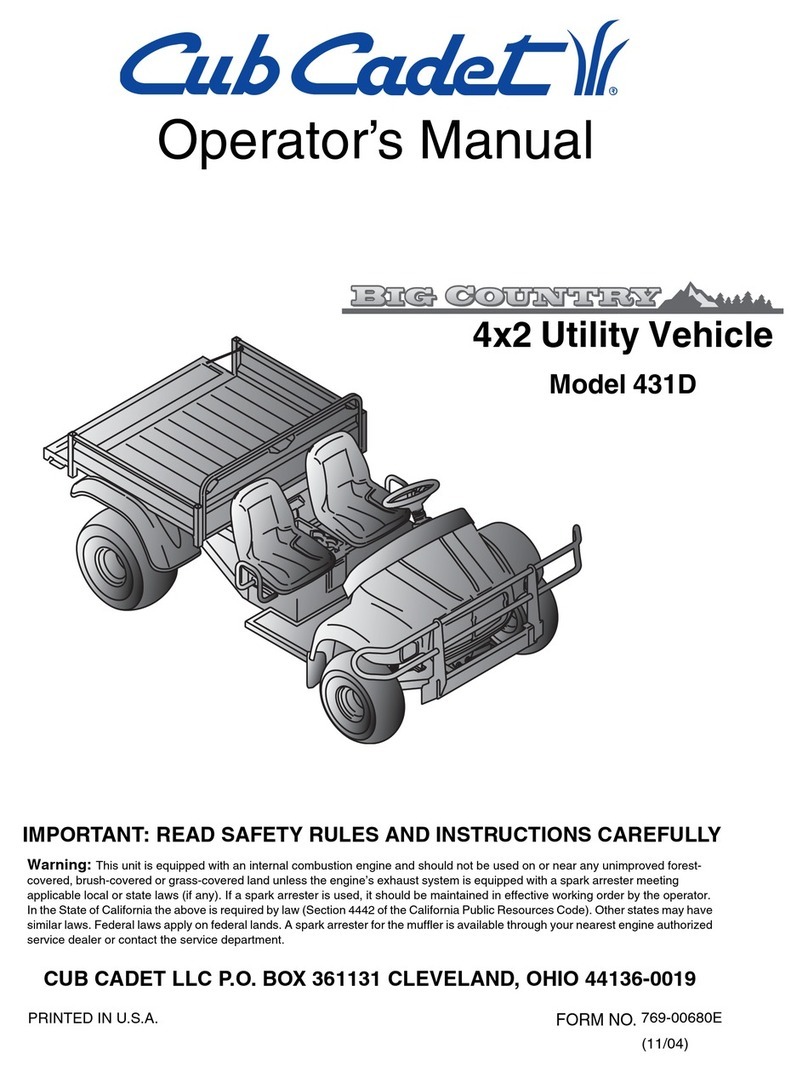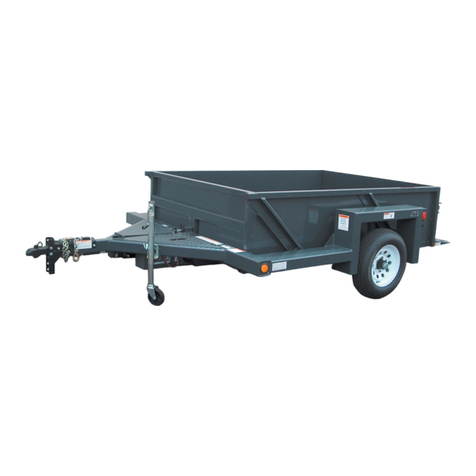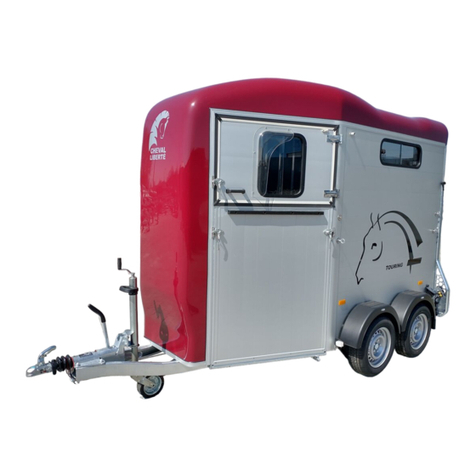
1Date of Origin – 02/24/11
Updated – 02/03/20
TABLE OF CONTENTS
NORMAL TRAILER OPERATION ..................................................................................................................................................................................................................3
SAFETY ................................................................................................................................................................................................................................................4
DECALS & WARNINGS.........................................................................................................................................................................................................4, 5, 6, 7
AIR BRAKE SYSTEM.........................................................................................................................................................................................................................8
WHEEL NUT TORQUE ......................................................................................................................................................................................................................8
ABS BRAKING SYSTEM ...................................................................................................................................................................................................................9
BACKUP WARNING SYSTEM...........................................................................................................................................................................................................9
CONTROL OF SAFE OPERATION .................................................................................................................................................................................................10
TRAILER KINGPIN WEAR............................................................................................................................................................................................................... 11
INSPECTION PROCEDURES BEFORE EACH TRIP .................................................................................................................................................................................12
LEGAL REQUIREMENT FMCS 49 CFR 392.7................................................................................................................................................................................12
LIGHTS AND REFLECTORS...........................................................................................................................................................................................................13
ELECTRICAL WIRING.....................................................................................................................................................................................................................13
FIFTH WHEEL AND KING PIN ENGAGEMENT..............................................................................................................................................................................13
TIRES ..............................................................................................................................................................................................................................................13
MUD FLAPS .................................................................................................................................................................................................................................... 13
TARP SYSTEM ................................................................................................................................................................................................................................ 13
LANDING GEAR .............................................................................................................................................................................................................................. 13
HUB MAINTENANCE...................................................................................................................................................................................................................... 13
WHEELS AND RIMS........................................................................................................................................................................................................................ 14
HUB LUBRICANT.............................................................................................................................................................................................................................14
SIDE STRUCTURES........................................................................................................................................................................................................................ 15
SUSPENSION AND SUSPENSION SUBFRAME ...........................................................................................................................................................................15
OPERATING INSTRUCTIONS.....................................................................................................................................................................................................................16
PARKING/EMERGENCY BRAKING SYSTEM.................................................................................................................................................................................16
OPERATING YOUR TIMPTE TENDER .......................................................................................................................................................................................................17
DUAL PURPOSE TENDER TRAILER OPERATING INSTRUCTIONS............................................................................................................................................ 17
TRAILER LOADING..............................................................................................................................................................................................................17
TRAILER UNLOADING.........................................................................................................................................................................................................18
SELF-CONTAINED POWER UNIT OPERATION............................................................................................................................................................................. 19
THUNDER ELECTRIC TARP SYSTEM ........................................................................................................................................................................................... 20
PROGRAMMING REMOTE TO WORK WITH THE THUNDER ELECTRIC TARP SYSTEM ..............................................................................................20
PROGRAMMING REMOTE TO WORK WITH THE EZ FLOW TRAP SYSTEM ..................................................................................................................21
THUNDER ELECTRIC TARP SYSTEM, MANUAL OPERATION .........................................................................................................................................22
TROUBLESHOOTING GUIDE..............................................................................................................................................................................................23
EZ-FLOW HYDRAULIC DOOR TROUBLESHOOTING GUIDE ......................................................................................................................................................25
PRESSURE RELIEF ADJUSTMENT ...............................................................................................................................................................................................26
EZ-FLOW QUICK RELEASE SYSTEM............................................................................................................................................................................................27
TRACTOR PTO SYSTEM “WET KIT” SPECIFICATIONS ...............................................................................................................................................................28
TENDER HYDRAULIC SYSTEM MAINTENANCE..........................................................................................................................................................................28
TIMPE TENDER TRAILER HYDRAULIC SCHEMATIC 577-60478.................................................................................................................................................29
SELF-CONTAINED TIMPTE TENDER TRAILER HYDRAULIC SCHEMATIC 577-60429............................................................................................................... 31
TENDER HYDRAULIC TESTING PROCEDURE ............................................................................................................................................................................ 33
CONVEYOR BELT TENSION AND TRACKING .............................................................................................................................................................................. 39
CONVEYOR BELT TRACKING ADJUSTMENT............................................................................................................................................................................... 40
GENERAL MAINTENANCE ......................................................................................................................................................................................................................... 41
AVOIDING CONTAMINATION.......................................................................................................................................................................................................... 41
TRAILER WASHING ........................................................................................................................................................................................................................ 41
CORROSIVE DETERIORATION...................................................................................................................................................................................................... 41
AIR HAMMER (VIBRATOR) MAINTENANCE..................................................................................................................................................................................42
HUB MAINTENANCE.......................................................................................................................................................................................................................44
WHEEL BEARING INSPECTION.....................................................................................................................................................................................................44
WHEEL BEARING ADJUSTMENT...................................................................................................................................................................................................44
BEARING LUBRICANT....................................................................................................................................................................................................................44
BRAKES...........................................................................................................................................................................................................................................46
AIR BRAKE SYSTEM - TROUBLESHOOTING ............................................................................................................................................................................... 47
BRAKE CONTROLS ........................................................................................................................................................................................................................48
AIR SYSTEM COLD WEATHER OPERATION ................................................................................................................................................................................48
AIR BRAKE PIPING SCHEMATIC .............................................................................................................................................................................................49, 50
CHECKING SPRING BRAKES ........................................................................................................................................................................................................51
AUTOMATIC SLACK ADJUSTERS..................................................................................................................................................................................................51
WHEEL ASSEMBLIES .....................................................................................................................................................................................................................52
WHEEL INSTALLATION...................................................................................................................................................................................................................52
TIRE CHANGE PROCEDURE.........................................................................................................................................................................................................53
AXLE ALIGNMENT...........................................................................................................................................................................................................................54
AIR-RIDE SUSPENSION SYSTEM ................................................................................................................................................................................................. 54
AIR-RIDE SUSPENSION SCHEMATIC ...........................................................................................................................................................................................55
ELECTRICAL SYSTEM DIAGRAM .....................................................................................................................................................................................57, 58, 59
LANDING LEGS...............................................................................................................................................................................................................................60
MAINTENANCE SCHEDULE - TENDER...............................................................................................................................................................................................61, 62
TIMPTE TENDER REFERNCE GUIDE .......................................................................................................................................................................................................63
REPORTING SAFETY DEFECTS - 49CFR 575.6 (a)(2)(ii).........................................................................................................................................................................64
TIMPTE “PEACE OF MIND” LIMITED WARRANTY....................................................................................................................................................................................65
TIMPTE BELT CONVEYOR SYSTEM WARRANTY COVERAGE & EXCLUSIONS ...................................................................................................................................66
FILING A WARRANTY CLAIM......................................................................................................................................................................................................................69




















